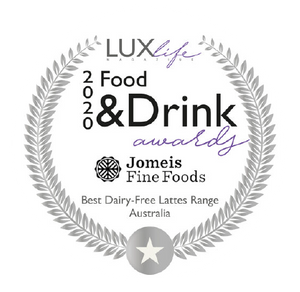Did you know that our bodies digest one concentrated food at a time?
Loosely defined as starches and proteins, concentrated foods are any foods that aren't considered a fruit or vegetable. Formed off of this premise, Food Combining is the process of eating the right foods together so our bodies can better digest meals and snacks.
Essentially, the digestion of starches (grain, potatoes and roots) rely on alkalic conditions. Whereas the enzymes needed to digest proteins thrive in an acidic diet. By consuming a combination of the two, we are asking our bodies to do too much, which can negatively impact our metabolism and ability to digest.
Unfortunately, many of the typical Western Food Combinations ask the body to do this. In essence, they are pulling the body in too many different directions, which can impede future gut health.
Before we begin pointing out the worst and best food combinations, we want to note that it is super important that you listen to your body. After all, you know it better than anyone else. If certain foods make you feel low in energy and bloated, it's best that you avoid them, even if they are part of a recommended food combination. This bloated and sometimes sluggish feeling is simply your body telling you that these foods are not working for you.
Now, back on track, here is a basic lowdown on food combining and how you can pair foods to feel your best.
Before we get to the good stuff, it's always important to address the bad. Some poorly combined foods that could deplete your energy include:
- Any meat and potatoes
- Spaghetti and meatballs
- Fish and chips
- Hotdogs
- Hamburgers
Eating these combinations requires the starch and protein digestive processes to work at cross-purposes. This essentially indicates they neutralise each other, meaning neither food will digest the way that it should. Rather, it stimulates a fermentation process that can turn foods into fungus and create stomach bacteria.

Now, we aren't here to discourage you from eating your favourite foods. But it is important to remember that moderation in treating your body is key. Otherwise, over-excessive consumption of these meals can cause all sorts of gut problems.
If you aren't sure how to determine if your digestion isn't working as it should, some key signs include:
- Gas
- Bloating
- Stomach pains
- Indigestion
- Heartburn
- Irregular bowel movements
- Fatigue
- Disrupted sleep
- Bad breath
- Skin issues
Poor digestion is so common that we accept these symptoms as a normal part of life. Many people have sadly forgotten what it feels like to truly thrive!
Strategic food combining can help improve your digestion to help you achieve better health.
Do you often feel tired and lethargic after you eat?
Digestion can demand a lot of energy. If we support our digestion with food combining and consuming probiotic promoting foods, staying hydrated and exercising, we can achieve better health and have more energy.
Poor digestion can also strain the liver, our all-important regenerative and detox organ, which we want to work at its best for optimal health.
Some easy guidelines for you to start with are:
- Eat only fruit until noon - the liver eliminates toxins bests between midnight and midday. Consuming fruit doesn't require action from the liver, meaning it can support better cleansing. This also allows the stomach to prepare for a more varied lunch.
- Pair proteins with non-starchy vegetables - Our stomachs crank up the hydrochloric acid and protein-digesting enzyme, pepsin, when we consume meat and poultry. This is not an ideal environment for the digestion of starches. Pairing these proteins with vegetables, like cauliflower, broccoli, Brussel sprouts, cabbage, carrots, celery, asparagus and onions is best. Alternatively, you can also consume them with sea vegetables, including nori, wakame, arame, hijiki and dulse.
- Leave 3-4 hours between a protein meal and a starchy one. Non-grain starches such as potatoes, squash and beets combine best with grains and pseudo-grains, such as rice, quinoa, millet, buckwheat and amaranth. Some classic combos include vegetable curries, pasta with tomato sauce, and baked potatoes with salad. They have great flavour and texture when eaten together.
- Protein fats pair well with non-starchy vegetables. The protein fats include nuts, seeds, olives and cheeses. They are perfect for blending in a smoothie or dessert.
Some fantastic food combinations to remember include:
- Protein and non-starchy vegetables
- Starchy vegetables and non-starchy vegetables
- Protein fats and fruit
- Protein fats and non-starchy vegetables
- Protein and fats/oils
- Protein fats and sea vegetables
- Leafy greens and ANYTHING your heart desires.

At Jomeis Fine Foods, we are all about living your best life through healthy eating and nutrition. All of our products have been made specifically to create long-lasting positive impacts on your gut health.
If you're looking for a great way to start your day and give your body its best, you should check out our Superfood Breakfast Bowls! Shop them HERE

